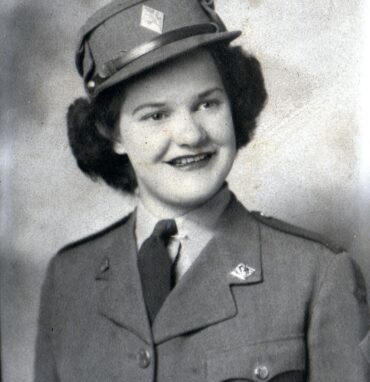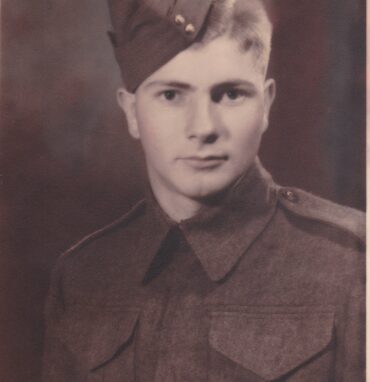This Remembrance Day, we pay tribute to the brave men and women who have served and protected our freedom. Their courage and sacrifices have shaped our lives, and it’s our duty to ensure their legacies live on.
At TB Vets, we invite you to join us in commemorating those who served by sharing their stories. Whether it’s a family member, friend, or loved one, you can honor their memory and contribution to our country.
Share Your Story & Photos
Do you have a cherished memory of a veteran who made an impact on your life? This Remembrance Day, you can share their story and a photo in tribute to their service. Your submission will not only be part of our collective remembrance but will also be featured in a special blog post on the TB Vets website and across our social media platforms.
By sharing their stories, we ensure that the bravery and dedication of our veterans will continue to inspire and be remembered by future generations.
Your Story will appears below!
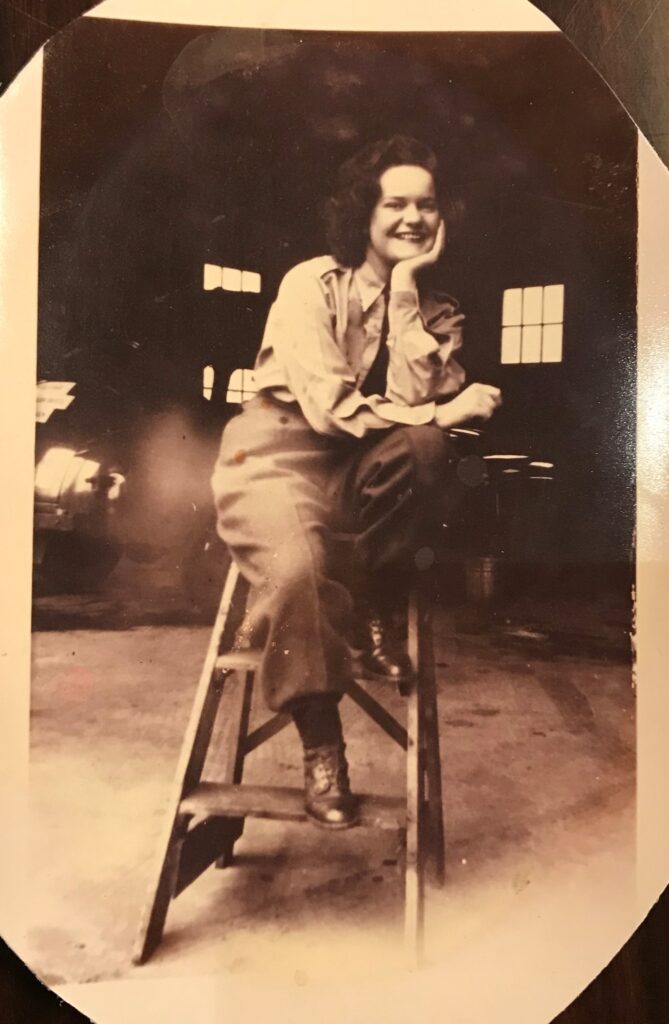
CATHERINE NORMA SCHAFF
1926 to 2023
Catherine (nee-Wilkinson) Schaff was born on May 13, 1926, in Eldersley, Saskatchewan. Her father Thomas was a farmer in Eldersley who served with the Canadian Army in France at Vimy Ridge. Thomas Wilkinson emigrated from Doncaster England before WWI. Catherine’s mother came from Morecambe, England.
Catherine was one of eight children with four sisters and three brothers. They all went to school in a one-room schoolhouse in the District of Clashmoor, Saskatchewan. Catherine’s father named the school after the town of Clashmoor in Scotland, where he was a patient after being injured in WW1.
Catherine left the farm in 1943 and went to work near Toronto in the Ajax war plant, where she learned to make shells for the war effort. She also worked in a Scarborough war plant making bombs. As a “Bomb Girl”
In 1944 she joined the Canadian Women’s Army Corp. She received driver training in Woodstock, Ontario and was posted to Halifax where she became qualified to drive trucks and jeeps. At the end of the war, she met troop ships of Canadian soldiers returning home. Eventually she was transferred to Vancouver where she drove officers around town to their meetings and other duties. When the war was over, she returned to Tisdale Saskatchewan where she soon married John Schaff (1946).
After their 6th child (3 girls and then 3 boys) was born Catherine and John moved to North Vancouver. They had 2 more girls for a family of eight children. Sadly, they lost two girls, Melody and Chrystal. John passed away June 30th, 2005, after nearly 60 years of marriage. Their children Heddy (Bob Bing), Kandys (Peter Merola), Thomas (Jennifer) Daniel (Lisa), David (Leigh Trask) and Alexandra and all of their children are members of Branch 44.
Catherine participated in volunteer work throughout her life. She started in Florentine, Saskatchewan, writing a column in a local newspaper on neighbourhood activities.
In Vancouver she worked for the Capilano Suspension Bridge in Banquet Services as she raised her children. She also volunteered and worked at the North Vancouver Recreation Centre in the cafeteria and spent 10 years volunteering at Riverview Hospital, visiting and entertaining the patients.
That experience later led to a full-time position at Inglewood Nursing Home in West Vancouver, where Catherine became Supervisor of General nursing aides. Catherine worked at Inglewood for 17 years.
Catherine kept herself busy with volunteer work with Royal Canadian Legion Tuberculosis Section, Branch 44, the Lower Mainland Colour Party, and at the Silk Purse Art Gallery in West Vancouver. She also was a hostess at St. Christopher’s Anglican Church.
Catherine joined Branch 44 in 1985 and had been attending meetings with John since 1962. Over the years Catherine has held many positions on the executive of Branch 44.
TVS Branch 44 is forever grateful for the many years of service Catherine gave to help the Branch. She was always ready to lend a helping hand with her warm and cheerful personality. We very much appreciated her dedication and service to Branch 44 and the Royal Canadian legion.
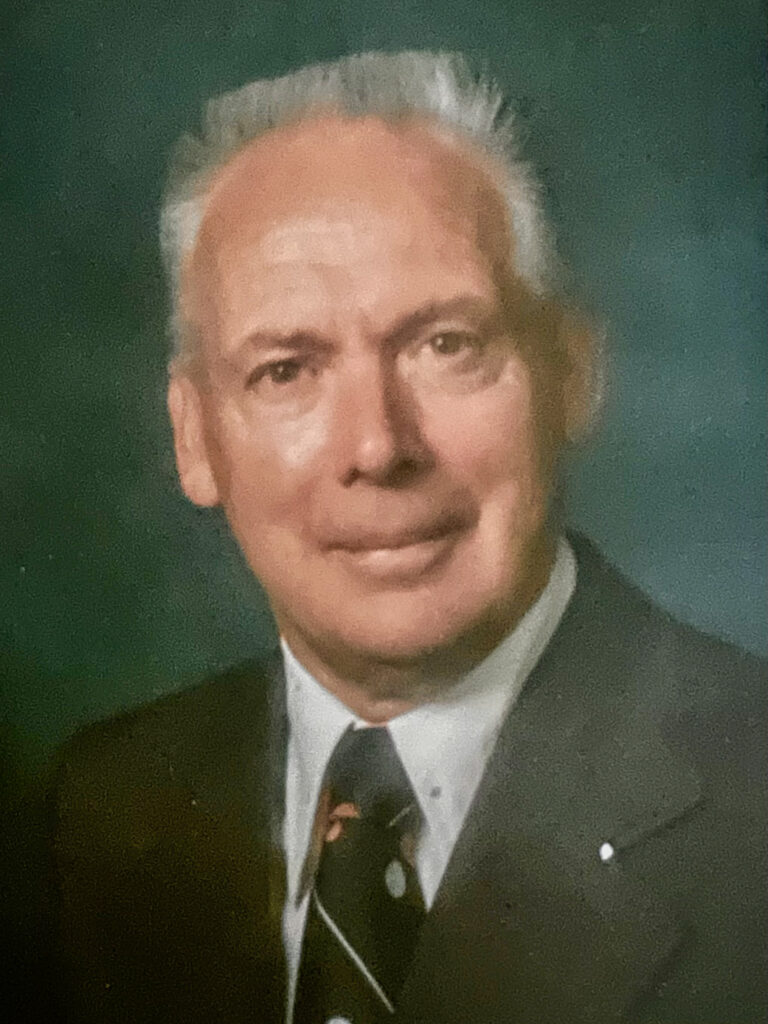
Charles W. Fussey
Barbara’s Dad “Charlie” was recruited in Trail, B.C. by the Duke of Connaught’s Own Rifles to fight in WW2. He was assigned to the tank division. Many described Charlie as an expert rifle man and sharp-shooter.
When he was stationed in England he collapsed while on parade only to learn he had contracted TB. Unfortunately, he wasn’t the only one who fell ill, as his brother Stan, in the same regiment, was later diagnosed with polio. The troops training at the time were not aware that sharing gas masks would cause disease to spread.
Charlie was sent home to Canada on a hospital ship and hospitalized at the Tranquille Sanatorium in Kamloops, B.C. and later transferred to and received care at the Shaughnessy Military Hospital in Vancouver, B.C. Charlie developed a reputation at the hospital for his positive outlook and sense of humour – many patients said they wouldn’t have made it through their treatment if not for the hope and reprieve he gave them.
Though Charlie had to have a rib removed during his TB treatment, he carried himself with pride and lived an active life until the age of 89. He was employed as a steward at the Royal Canadian Legion Branch 15, Abbotsford, B.C. until retirement. Charlie was an avid hunter and hewer of wood; few were aware of his disability.
Barbara’s mother, Olive, started donating to TB Vets to support veterans like her husband recovering from TB. Barbara continues the tradition by giving throughout her adult life.
Barbara hopes that her donation to TB Vets helps towards a world where no one contracts TB, and is reassured to know that her support helps patients like her Dad recover and live full lives.
William Crawford
William was known as “Junior” to his family, but as “Bill” to his friends. He was born on 13 July 1923 in Coats’s bridge, Lanarkshire to William and Elspeth Crawford. The family lived in Edinburgh. After attending Boroughmuir school, Bill entered the Royal Navy. He trained at H.M.S. Caledonia in Rosyth and was later posted to H.M.S. Belfast. He was aboard Belfast when she captured the German merchant vessel SS Cap Norte in October 1939.
In November 1939, Belfast was seriously damaged by a magnetic mine. Bill, along with a number of other shipmates was transferred to Hood shortly thereafter. He served aboard her until her loss. He was unhappy with life on the Hood, but did his duty. At the time of the sinking, he was serving as a Boy 2nd Class and was later upgraded posthumously to Boy 1st Class. He was 17 years old at the time of his loss. HMS Hood Sunk May 24 1941 by the German ship Bismar
My uncle Bill was the second of three brothers. Jim was the eldest and my Dad Harry was the youngest. My Dad started the Bicknell Sea cadet Corp. in Richmond BC and here he discovered that the cutlass used by our Gunnery Officer was engraved H.M.S. Belfast. The Belfast at that times was in dry dock on the River Thames in London, England. The Belfast was a Memorial Ship tourist attraction for the public to witness what life was like on board ship during WW2.
To honor their brother my Dad and Uncle Jim took the cutlass and returned it to H.M.S. Belfast. These two brothers met with the Captain of H.M.S. Belfast and told him of their brother and his passing on board the H.M.S. Hood. There were pictures and letters sent home by Uncle Bill that my Dad and Uncle Jim shared with the Captain of the H. M. S. Belfast. This prompted the Captain to use my Uncle Bills letters and photos as part of the H.M.S. Belfast war memorial on board the ship. When the public enters the bulkhead of the H.M.S. Belfast the first thing that they see is a life-size photo cut-out of my Uncle Bill. As the public walks by this cut-out they can read his actual letters sent to his mother, my Nana, during the second World War!
Thomas R. Wilkinson
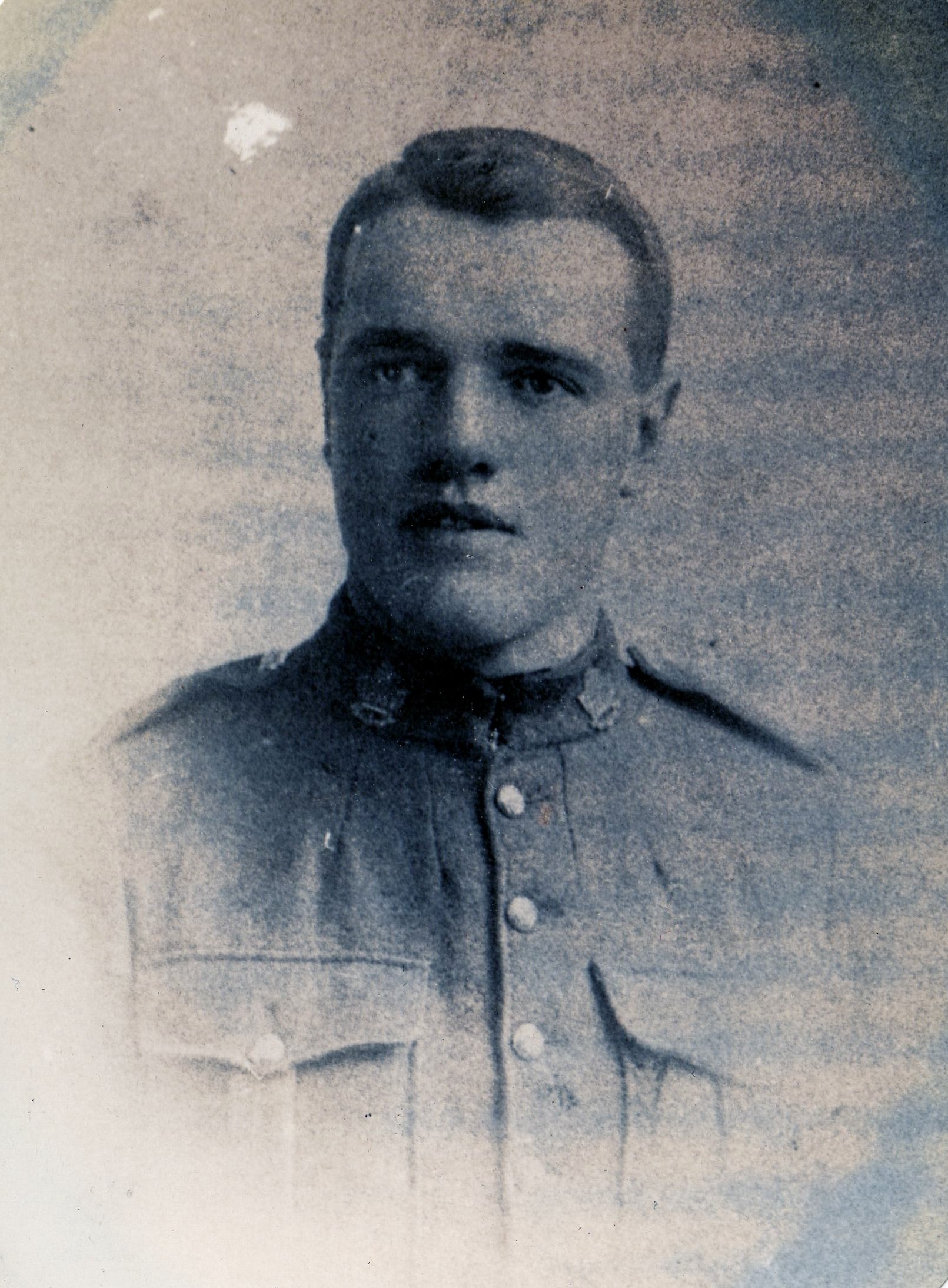
Born December 13, 1889, in North Leverton, Nottinghamshire, England. Thomas moved to Canada to Clashmoor district in Northeast Saskatchewan in1910. He took up a homestead and became a livestock and wheat farmer.
Thomas enlisted in the Canadian army and joined the 188th Battalion in 1915 in Tisdale, Sask. While serving in Europe WWI, he was wounded in action in the battle of Vimy Ridge. He was taken from the battlefield to Boulogne, France and later transferred to Edinburgh, Scotland where he convalesced with a shoulder, arm and back injury. Many years later his children thought it was fun to feel the holes in his back that were left by the shrapnel injury.
Private, Thomas was honourably discharged in 1917. It is interesting to note that his last pay was for $177.40 for his service.
Even though Thomas was left with the injuries of war it did not stop him from having a full and happy life. In July 1923, Thomas married Dorothy Waite, and they had 8 children, four girls and 3 boys and he was proud of his 26 grandchildren.
Thomas was active in the community of Clashmoor and served as a councillor of the Rural Municipality of Connaught, he also served as a school trustee and was active in the Royal Canadian Legion. He was also known for his work as a layman of the Anglican church. He did all of this while raising a family and working hard on the family farm.
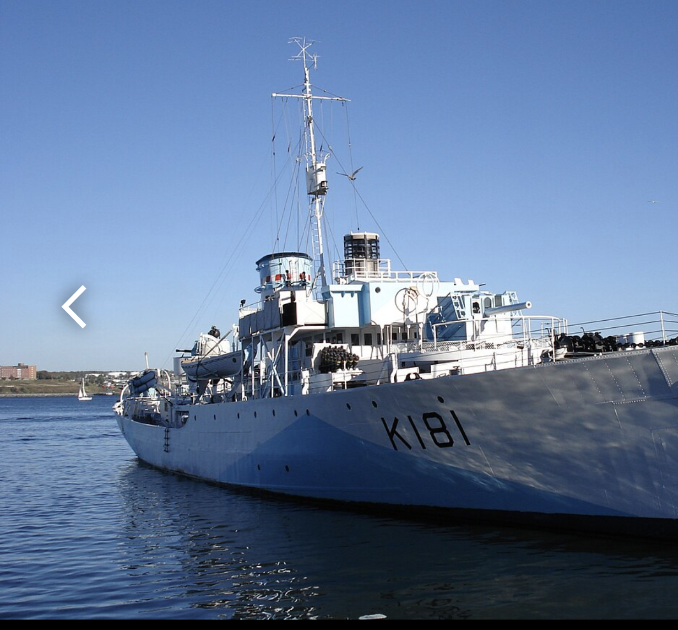
Robert Ironside
I’d like to acknowledge a very close friend John, a WWII Veteran. As a member of the Fort Garry Horse, he was a part of the initial landing at Juno Beach in Normandy on June 06, 1944. He drove a fuel truck during his wartime service. The attached link tells the story quite well. It is an interview done by CFJC television, Kamloops recently. Today John is in excellent health and quite mobile, using a walker at times because he feels safer.
Sharon Kusche
My mother had 7 brothers who all enlisted - one Air Force, one Navy, the rest Army, plus a brother-in-law. Two were prisoners of war All 8 survived and returned home.

Patrick Michael McIntee
Born November 22, 1917 in Wainwright, Alberta. P M’s father died when he was twelve and so he quit school to look after his seven siblings and to run the farm.
He enlisted with the Edmonton Fusiliers, and went off to war with the Calgary Highlanders in 1940. He came home in 1945 with some serious
injuries. He had been shot in the upper right arm and had been thrown off
the top of a military truck suffering neck and spinal injuries for years, but continued to weather on in spite of his horrific pain.
One of my favourite memories of his war stories was him telling of trying to get a dozen eggs from a French lady on her farm in France and he only knew how to ask for one egg a time – so he had to ask 12 times!!!!!!
My dad died in 1986, but in 2010 when I was out at my mother’s house, the phone rang and it was a man who had gone through the war with my father. “Sharon, your father was the bravest man I have ever known”, he said.
My father was honoured to fight for his country and I am honoured that
he was my father.
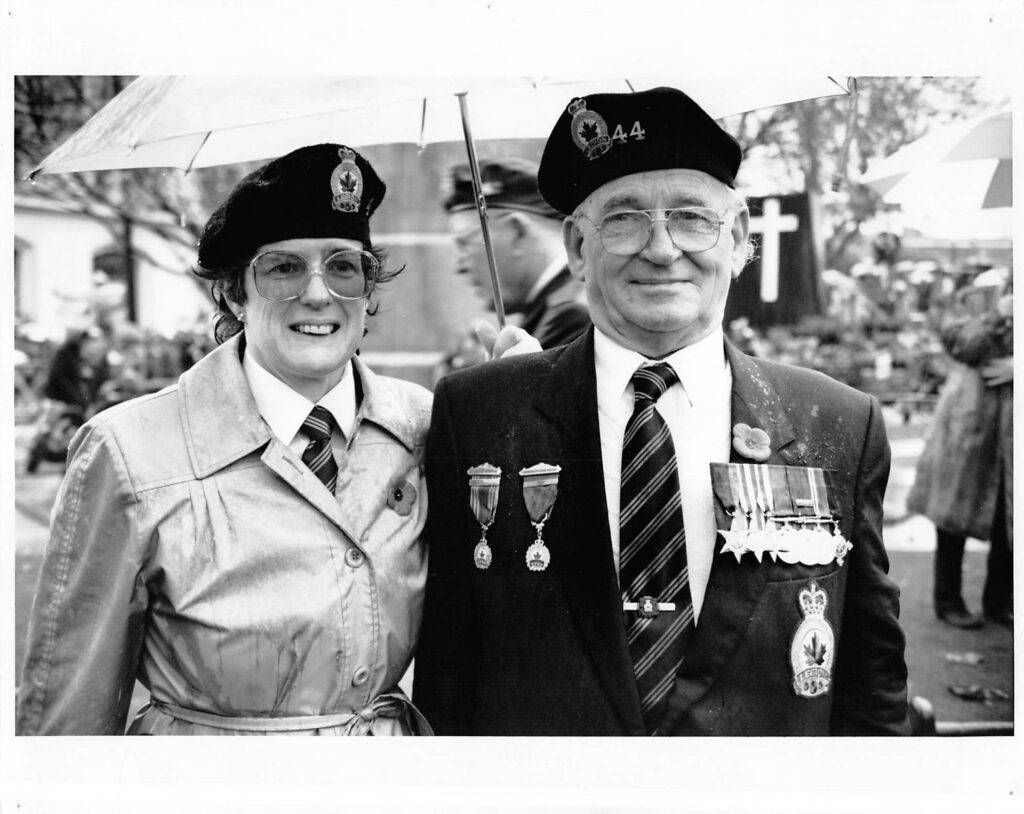
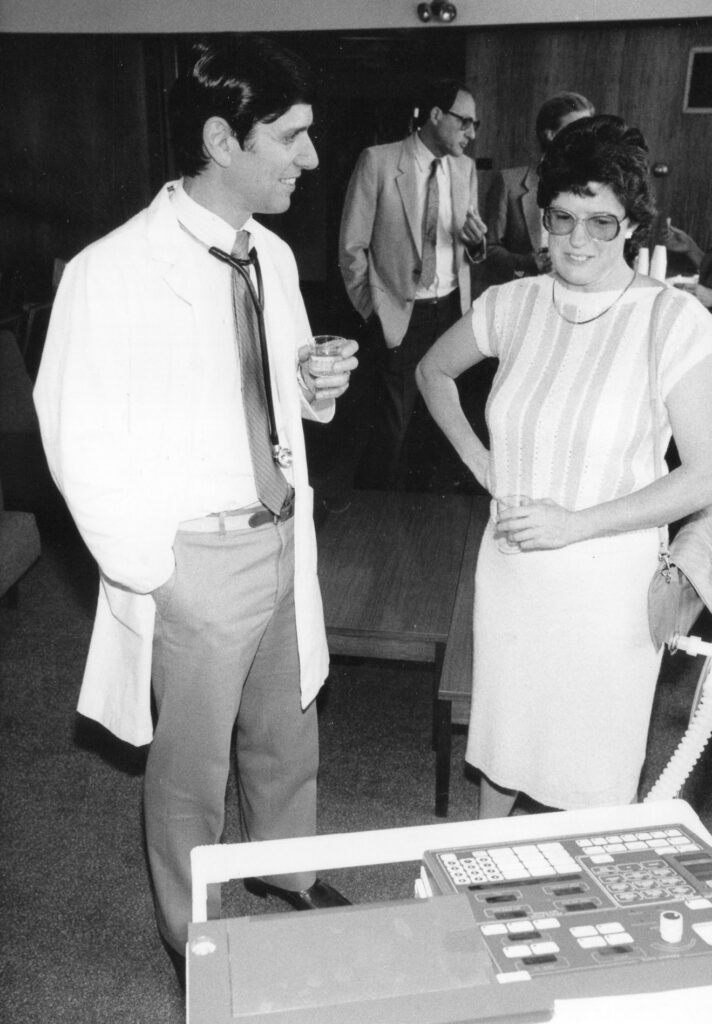
Joanne Walter Henderson
Joanne Joined the Canadian navy in 1969 just after her 19th birthday. While training and serving in the Navy Joanne contacted Tuberculosis. She didn’t initially know what it was, just that she was very ill and loosing weight and coughing all the time.
She was soon diagnosed with TB with the TB scratch test on the arm and confirmed with a chest X-Ray, tests they still use today.
Joanne spent almost a year recovering in the TB unit at the Willow Pavilion at Vancouver General Hospital.
Joanne explained that her colleagues from the Navy who joined TVS Branch 44 of the Royal Canadian Legion, helped save her life because of their support and friendship.
Joanne became a valued member of Legion Branch 44 as decorated President and TB Vets Board Chair and Executive Director of TB Vets.
The photo shown is of Joanne with a piece of respiratory equipment and a photo of Joanne on Remembrance Day.
TB Vets is forever grateful for Joanne’s guidance and loyalty shown to TB Vet and fellow Veterans. We wish her well as she continues to struggle with the long term health issues caused by Tuberculosis.

John J. Schaff
1920-2005
Our Father was born in Lampman, Saskatchewan to a family of 14 children who’s parents moved to Saskatchewan from Odessa, Russia in 1920 and began farming.
Dad is a decorated WWII Veteran. He enlisted in the Canadian Army in 1942 and was posted to the Canadian artillery division. His regiment was a light anti-aircraft, equipped with Bofors AA guns. John served in the European campaign as a Lance Corporal, landed in France one month after D-Day and was in action throughout Belgium, Holland and deep into Germany, seeing action continuously throughout his service. As a gunner, his purpose was to protect bridges and communication vehicles. Ther were shelled constantly and in the process, he lost his hearing in one ear and suffered from shell shock, (PTSD) for most of his life. Dad grew up speaking German and was also employed as an interpreter during the war.
Although he spoke little of his war years John never did get over his dislike for “hardtack” or “mutton.” He was discharged in January 1946.
I was surprised to read that all enlistees signed a Will prior to Boot camp in case they did not survive the war.
Following the war, Dad married Catherine and through the Veterans Land Act, he acquired his own land and began farming in the Tisdale area of Saskatchewan. John and Catherine raised 8 children on the farm and in North Vancouver. The family moved to North Vancouver in 1955 and Dad worked for the District of North Vancouver until his retirement at age 65. During his career Dad was a heavy-duty mechanic, “he could fix anything”, and he worked in the Park board division for many years.
The Royal Canadian Legion became important to him where he made long time friends who were special to him during his 59-year membership. John was active in the New Chelsea Housing society and a Director of the Board of TB Vets Charitable Foundation.
Dad faced his entire life with strong faith, bravery and dignity. His life was filled with many hardships, but he saw them as “just anther hill to climb”.
